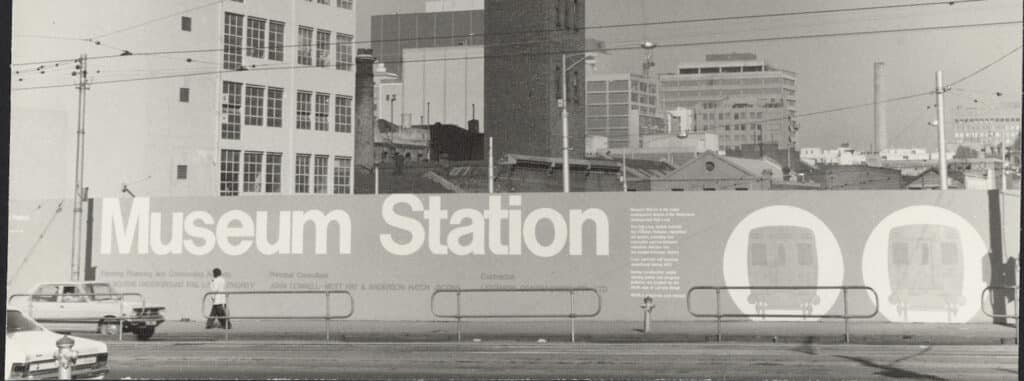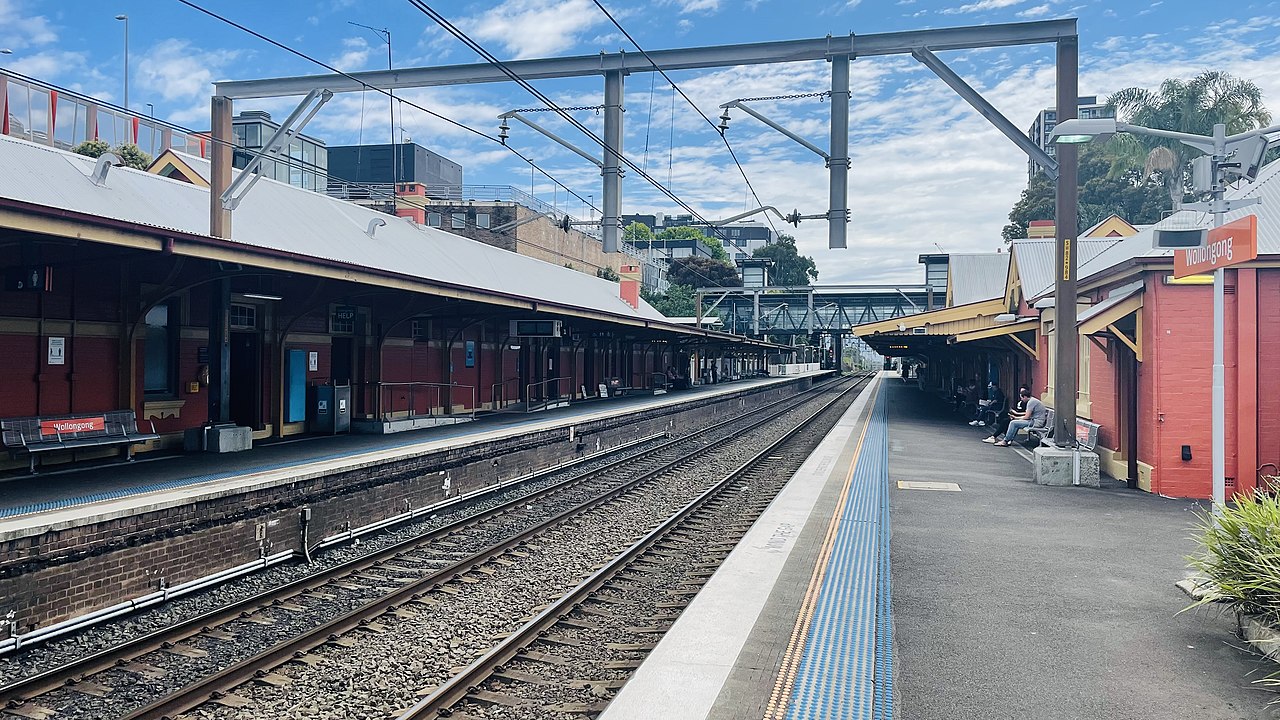The City Loop – formally known as the Melbourne Underground Rail Loop – was a truly city-shaping infrastructure project. Planned and built despite strident criticism from so-called experts and academics, it transformed central Melbourne – below and above ground – laying the foundation for the vibrant city we enjoy today as residents, workers, visitors and commuters.
The city before the loop
When construction started in 1971, Melbourne was a growing city of 2.6 million people, and the skyline was just starting to transform – with skyscrapers taller than 30 storeys first appearing on Bourke Street in 1969 (AMP Square) and 1971 (Marland House).
As more people flocked to the city, Melbourne’s only two CBD train stations (Spencer Street and Flinders Street) were feeling the pressure. Flinders Street Station serviced 90 per cent of commuters and was thought to be the most congested station in the world. This meant many chose to travel by car instead, adding to congestion on the roads.
The concept and debate
The City Loop was an ambitious project designed to meet the needs not just of Melbourne at the time, but future Melbourne. Three brand new underground stations connected by 12km of underground tunnels would connect with Flinders and Spencer Street stations and most of the city’s train lines.
But there were many project critics during the early years of planning and construction who voiced their opposition to the City Loop because of its cost and how long it would take to build. Some commentators called the project ‘a folly’ that should be stopped or delayed.
One report from the University of Melbourne criticised the government for basing its planning on assumptions that the city’s workforce would increase by 40 per cent by 1985, and that demand for rail transport to the city would increase.
Prepared by transport academic Nicholas Clarke, the report suggested many of the arguments put forward to support construction of the loop were misleading or irrelevant, and there was strong evidence that to proceed at the time would be a serious mistake.
Instead, it proposed the Flinders Street station bottleneck could be solved by simply staggering shopping hours, improving tram systems and replacing obsolete trains.
Construction kicks off
The first sod was turned on 22 June 1971 and the project took 14 years to complete. 1500 construction workers were supported by a wide range of engineers, architects and technical experts.
Melbourne Central Station (known as Museum at the time) was excavated using a ‘cut and cover’ technique. La Trobe Street and the trams needed to be diverted for several years. Flagstaff and Parliament stations were dug using mining methods, while an early tunnel boring machine called ‘The Mole’ excavated some of the tunnels.
The City Loop officially opened on 24 January 1981 to great fanfare. Museum Station was the only underground station completed at the time, with Parliament and Flagstaff stations opening in 1983 and 1985.
The legacy of the loop
Significantly, the City Loop’s benefits have been seen not only in transport terms, but in the way the city was able to function and evolve above ground.
It opened up access to the northern parts of the CBD for residential and commercial development. Melbourne Central shopping centre was built above the underground train station, the rail stabling yards were moved away from the centre of the CBD, and St Kilda Road and Southbank precincts were developed.
Initiatives such as ‘Postcode 3000’ provided incentives for people to live in the city, transforming it to a bustling hub – day and night. This all helped encourage higher-value residential and commercial development and increased the number of jobs in the CBD. The station precincts have continued to evolve to this day, attracting new housing and commercial developments over the decades.
In 1978, architectural commentator Norman Day described Melbourne as ‘an empty useless city centre’, but subsequent decades saw this perception turned around. Melbourne transformed into a vibrant hub where people worked, lived and visited – the city centre we know and love today.
Comparisons today
Office workers who ‘battled’ traffic jams as they drove to work in the 1960s and 70s would be astonished by today’s traffic volumes – not only in the city but right across middle and outer suburban Melbourne.
Just as Melbourne faced growing pressures several decades ago – today, with unprecedented population growth, we must again address housing supply, congestion and jobs availability by planning now for the future, with smart and strategic city-shaping infrastructure that will recalibrate how our city evolves.
Like the City Loop – which Melburnians now take for granted – today’s major infrastructure projects, including Suburban Rail Loop, will be essential for the city’s liveability in the decades ahead and will play a similarly critical role in shaping Victoria and its economic, social and cultural health for future generations.
The post Looking back at the construction of Melbourne’s city loop appeared first on Rail Express.



